Some places only reveal their magic when you’re actually there, standing on the gravel, breathing in the air, and letting the stories come to life around you. Château de Chambord is one of those places.
The first time I caught a glimpse of its towers through the early morning mist, it stopped me in my tracks—honestly, it’s hard to believe this castle wasn’t dreamt up for a movie set. There’s something slightly surreal about Chambord: it rises from the flatness of the Loire Valley like a vision that belongs equally to history, legend, and a painter’s imagination.
And yet, beneath all the grandeur and fairy-tale trappings, Chambord is real. It’s a masterpiece built on the ambitions of a young king, inspired by the mind of Leonardo da Vinci, battered by centuries of revolution and neglect, and finally, lovingly restored. Today, it’s a place where you can lose yourself for hours—whether you’re wandering through forested parkland, climbing spiral staircases, or just sitting with a coffee in the sun, wondering what secrets still hide behind those walls.
If you’re dreaming of visiting, or you’re already planning your trip, this guide is for you. I’ll share what I wish I’d known before my first visit, sprinkle in some hard-earned tips and a few personal stories, and make sure you walk away with all the details you need for an unforgettable day at Chambord—no matter what kind of traveler you are.


Quick Facts & Essential Info
Château de Chambord sits smack in the middle of the Loire Valley, about two hours south of Paris. The setting is pure storybook—thick forests, slow rivers, and villages that haven’t changed much since carriages were the norm. The castle itself is surrounded by a massive walled park that’s bigger than inner Paris. Yes, really.
- Location: Loire Valley, France (about 2 hours south of Paris)
- Construction: 1519 – 1547
- Style: French Renaissance, with medieval and Italian influences
- Notable Residents: King Francis I, King Louis XIV
- Main Highlights: Legendary double-helix staircase, dramatic rooftop, vast walled park
- Ticket Price: ~€16–€19 for adults (gardens included), discounts for kids/families
- Opening Hours: 9 a.m.–6 p.m. (April–October), shorter in winter—check chambord.org for current info
- UNESCO Status: Part of the Loire Valley World Heritage Site
- Accessibility: Wheelchair access to ground floor/park; upper floors via stairs only
- Official Website: www.chambord.org

History & Legends

The King Who Dreamed Big
The story of Chambord begins in 1519, with a young, swaggering King Francis I. He’d just returned from Italy—riding high on victory, dazzled by the Renaissance, and hungry to leave his mark on France. Rather than build another cramped medieval fortress, Francis dreamed up something different: a hunting lodge that would put all the other royal estates to shame.
But here’s the twist—Chambord wasn’t really meant as a permanent home. Francis wanted a showpiece, somewhere to impress important guests and host epic hunting parties. Think less “royal home” and more “ultimate party pad,” set deep in a wild forest.
Da Vinci’s Whisper
One of Chambord’s most enduring legends is its supposed link to Leonardo da Vinci. While there’s no smoking-gun proof that Leonardo designed the whole château, the story goes that Francis I, who adored the Italian genius, invited him to France in his final years. Leonardo died just a couple years before construction began, but many historians (and just about every tour guide you’ll meet) will swear that his spirit lives on at Chambord—especially in the design of the mind-bending double-helix staircase.
Even if Leonardo never set foot here, the Renaissance influence is everywhere: symmetry, elegance, and that obsession with blending art, science, and nature.
A Stage for the Sun King (and a Magnet for Drama)
Later, the castle passed into the hands of Louis XIV, the Sun King—the same guy who built Versailles. He threw legendary parties here, expanded the gardens, and brought a dash of Parisian style. For a time, Chambord was a center of power, luxury, and, frankly, excess.
But the 18th and 19th centuries weren’t so kind. The Revolution swept through, most of the furnishings were sold off, and the castle stood empty and neglected for years. It’s said that you could wander the halls and hear nothing but your own footsteps and the wind whistling through broken windows.
Art on the Run: Chambord’s WWII Secret
Here’s a fact few travelers know: during World War II, Chambord became a secret refuge for art. As bombs rained down on Paris, curators whisked away the Mona Lisa and countless masterpieces, hiding them deep in the château’s stone corridors to protect them from Nazi looting. For a while, Chambord held some of the world’s greatest treasures in silence.
Rumors, Myths, and Hauntings
What would a castle be without a few good ghost stories? Locals whisper about secret tunnels beneath the castle—some say they were escape routes, others insist they hid royal treasures. And, of course, there are tales of mysterious lights and unexplained music echoing through the empty halls on stormy nights. Skeptical? Sure. But when you’re standing under those candlelit vaults, it’s easy to see why these stories persist.
Chambord Today
Restoration work in the 20th and 21st centuries has breathed new life into the château. The rooms have been carefully restored, the gardens are lovingly maintained, and today, Chambord stands not just as a museum but as a living, breathing slice of French history.

Architecture & Unique Features
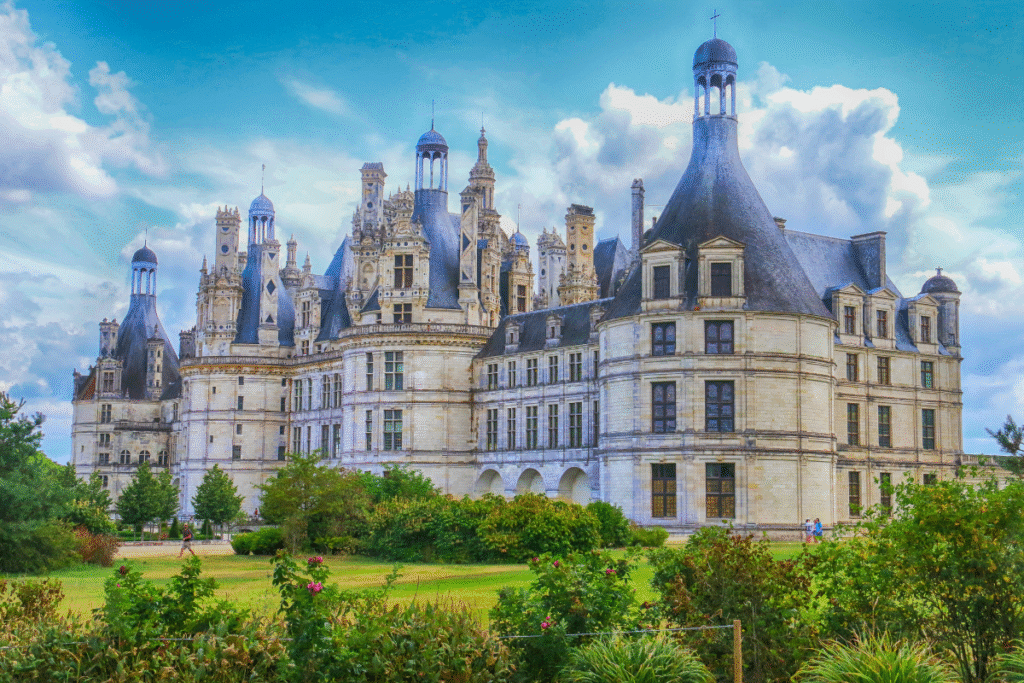
A First Impression That Never Fades
Let’s be honest: you don’t just stroll up to Chambord. You approach, and the castle just keeps getting bigger. Even if you’ve seen photos, the real thing is something else—this tangle of towers, chimneys, and spires shooting up against the sky. The building is so big, with so many architectural flourishes, that it almost feels like a fantasy. My first time, I stood in the shadow of the entrance for a good five minutes, just trying to take it all in.
The Double-Helix Staircase: Chambord’s Masterpiece
If you only remember one thing from this article, let it be the staircase. Tucked into the heart of the castle, this famous double-helix spiral is equal parts show-off and mystery. It’s believed to be inspired by da Vinci—two stairways winding around each other, so you can ascend and descend at the same time without ever meeting the person on the other side. Yes, it actually works, and yes, you’ll want to try it for yourself (trust me, it’s fun).
There’s something magical about catching a glimpse of someone else circling around, visible through the open core, but always just out of reach. If you’ve brought kids, they’ll want to race you to the top. If you’re a fan of engineering, you’ll be grinning from ear to ear.
Rooftops, Turrets, and the Skyline Walk
Don’t miss climbing up to the terrace level—some of the best castle views in Europe are up here. Once you’re on the roof, you’re surrounded by a forest of chimneys, lanterns, and decorative towers. Locals like to call it “a town on top of a palace,” and that’s exactly what it feels like.

Find a quiet corner near sunset and watch as the light glows on the white limestone and the shadows stretch over the hunting park. It’s a photographer’s dream, and—on a personal note—probably my favorite place in the whole château.
Grand Halls, Secret Corners, and Endless Rooms
Inside, the rooms range from grand and imposing (the royal apartments, with their tapestries and painted ceilings) to unexpectedly cozy (tiny side chambers, hunting closets, and forgotten corners where you might catch a ray of sunlight through a medieval window).
Don’t rush. Try to get lost, just a little. Check out the restored 18th-century kitchens and the gigantic fireplace in the main hall—big enough to roast several boars at once (not that you’d want to, but still).
The Gardens and Grounds: More Than Just a Backyard
Outside, Chambord is surrounded by its own vast, walled park—13,000 acres of forest, trails, marshland, and open meadows. It’s the largest enclosed park in Europe, home to deer, wild boar, and hundreds of bird species.
You can rent a bike or even a little electric cart to explore the grounds. Or, do what I do: bring a picnic and find a spot on the lawn, with a view of the castle towers above the trees. In spring, the wildflowers are incredible. In autumn, the whole place turns gold and red.
Art, Exhibitions, and That “Living Museum” Feel
Unlike some historic sites, Chambord isn’t frozen in time. You’ll find changing exhibitions—modern art, photography, sometimes even concerts or medieval reenactments in the gardens. If you’re lucky, you might catch a hunting horn demonstration, a tradition here since the days of Francis I.
Little Details to Watch For
Look for the salamander carvings (Francis I’s personal symbol) in the stonework, or the initials “F” and “C” worked into the moldings. Each has a story—ask a guide or join a tour if you want the full scoop.


How to Visit
Getting There: Your Options Explained
- By Car: If you like freedom and flexibility, driving is the best option. From Paris, head south on the A10; it’s about two hours (with tolls). The roads are well-marked, and there’s ample paid parking a short walk from the château gates. If you’re renting a car, aim to arrive early to avoid the midday rush.
- By Train: Trains from Paris Austerlitz or Montparnasse get you to Blois-Chambord station in around 90 minutes. From there, grab the shuttle (check the schedule ahead!) or a taxi. Bonus points if you rent a bike at the station and ride the last few kilometers through the forest—flat, scenic, and fresh air all the way.
- On Tour: Guided bus tours depart daily from Paris and major Loire Valley towns. They usually cover transport, entry, and sometimes lunch. These are good if you want someone else to handle the logistics, but you’ll have less time to explore independently.
- By Bike: If you’re cycling the Loire à Vélo route, Chambord is a highlight. Secure bike racks are available near the entrance, and you can even rent bikes (and electric carts) right on site to cruise the vast park.
Admission, Hours, and Guided Tours
- Admission: Tickets cost €16–€19 per adult (including gardens); reduced rates for students and children. Family bundles and combo tickets with other châteaux are available, so check what’s on offer at the time of your visit on their official website.
- Buy Ahead: Book online via www.chambord.org to avoid the sometimes long ticket lines—especially in July and August.
- Opening Hours: Typically 9 a.m. to 6 p.m. in high season (April–October). In winter, hours are shorter and last entry is earlier, so always double-check before you travel.
- Guided Tours & Audioguides: Offered in multiple languages, these add tons of context and are worth the extra few euros. The official app also provides a solid self-guided experience with maps and audio commentary.
Tip: Chambord is the largest château in the Loire Valley and has a 13,000-acre park—bring comfortable shoes!
Best Time to Visit: Seasons and Crowd Tips
- Spring 🌸 (April–June): Fresh gardens, cool mornings, and fewer crowds. Wildflowers in the park are spectacular.
- Summer ☀️ (July–September): Everything’s open and lively. Expect bigger crowds, but also more events, exhibitions, and guided activities for families.
- Autumn 🍂 (October–November): Gold and crimson leaves, migrating birds, and a peaceful mood. Fewer tourists, easier photos.
- Winter ❄️ (December–February): Short days, but festive decorations and almost no crowds. Great if you love atmosphere and don’t mind bundling up.

Accessibility, Families, and Food
- Accessibility: The main grounds, lower floors, and restrooms are wheelchair-accessible. However, most upper floors and the rooftop terrace are only accessible by stairs (it’s an old castle, after all).
- Family Tips: Bring a stroller for small kids—the castle is huge. There’s a playground and scavenger hunt sheets at the info desk. Don’t be shy about taking breaks; the lawns and park are perfect for letting kids run around.
- Dining: Choose from several cafés, a sit-down restaurant, and food trucks outside the main entrance. Or, bring your own picnic for a relaxed lunch with unbeatable views.
- Picnic Areas: Designated spots are scattered around the grounds. The shaded park near the canal is a local favorite.
- Restrooms & Baby Facilities: Plentiful and clean, near the entrance and café areas.
Tip: If you want to see deer and wild boar, head to the park’s observation areas at dawn or dusk (ask at the info desk for a map). Few tourists realize how wild the grounds really are.
Photography & Rules
- Photography: Allowed in most public areas, except certain temporary exhibitions or private rooms. No flash inside the main rooms.
- Drones: Not permitted on site (unless you have special written permission).
- Dogs: Only allowed in the park and gardens—never inside the château itself (except guide dogs).
Events & Seasonal Experiences
- Special Events: Check the calendar for outdoor concerts, medieval reenactments, Christmas festivities, and art exhibits.
- Hunting Season: Parts of the park may be restricted during official hunts (usually autumn and winter weekends)—ask at the visitor center for the latest info.
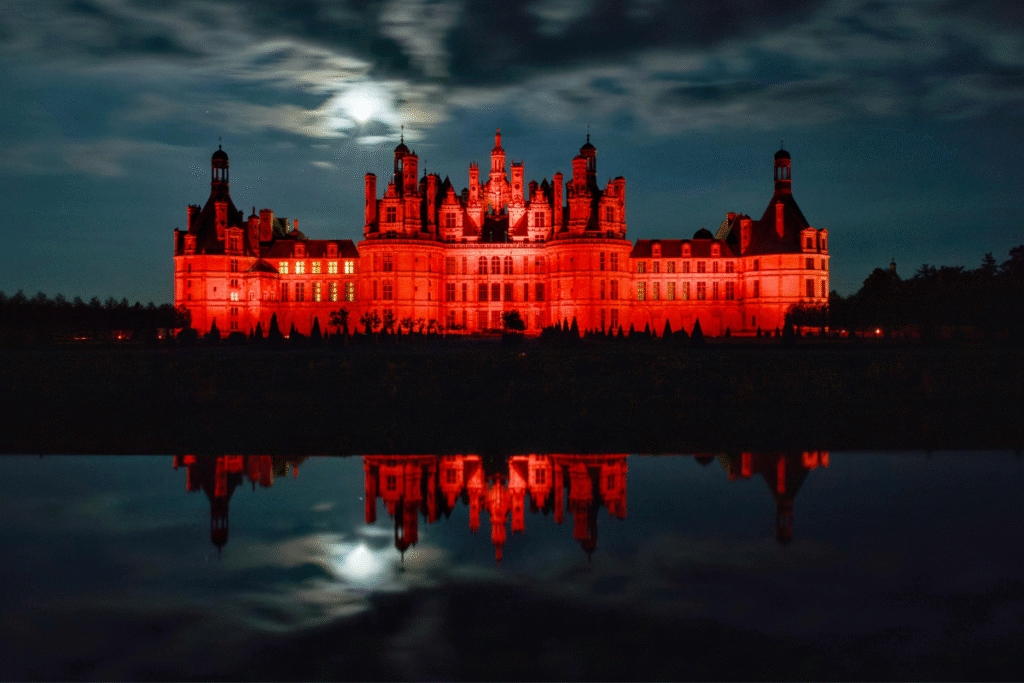
Extra Tips
- Luggage: There are no lockers for large bags. Travel light or leave suitcases at your hotel or in your car.
- Souvenirs: The castle gift shop is well-stocked with local wines, gourmet foods, and handmade crafts—great for meaningful gifts or a treat for yourself.
- Wi-Fi: Free in the visitor center; patchy elsewhere.
With a little planning, your visit can be smooth, inspiring, and hassle-free—leaving you with more time to wander, explore, and soak up the magic.

Travel Tips & Itinerary Ideas
How to Make the Most of Your Visit
- Start Early: Arrive at opening time if you want peaceful photos or a head start on the staircase. Mornings are quieter, especially outside of July and August.
- Don’t Rush: There’s a lot to see. Block out at least three hours for a first visit, or four to five if you’re into architecture, history, or want to roam the park. A packed half-day can still feel rushed.
- Map in Hand: Grab a paper map at the visitor center (or use the app). Chambord is a maze; it’s surprisingly easy to get turned around—even for regulars.
- The Must-Sees: Don’t miss the double-helix staircase (try both sides!), the royal apartments, the panoramic rooftop, and the formal gardens. Watch for Francis I’s salamander symbol hidden throughout.
- Hidden Corners: Duck into the small chapels, hunting closets, and side stairwells. They’re usually empty, and some have unexpected views or quirky historic details.
- Take a Break: The café terrace has an unbeatable view. In good weather, picnicking on the grass under the castle’s shadow is a memory in itself.
Half-Day Itinerary (3–4 hours)
- Arrive Early: Enter as soon as the château opens.
- Start with the Rooftop: Head straight up for morning light and empty walkways.
- Double-Helix Staircase: Take both spirals—up and down—then wander the grand halls and apartments.
- Formal Gardens: Stroll or snap photos; spring and summer are especially colorful.
- Quick Snack: Grab a pastry and coffee at the café before leaving.
Full-Day Itinerary (5–7 hours)
- Begin as Above: Start with rooftops and grand staircase.
- Guided Tour: Join one for stories and hidden context (book ahead in English or French).
- Lunch: Either a picnic in the park or at the sit-down restaurant.
- Park & Canal: Rent a bike or electric cart and explore the wider estate. Birdwatch or try to spot deer near the observation points.
- Exhibits/Events: Check for temporary exhibitions, art shows, or live performances. Many are included with admission.
- Late Afternoon: Relax on the lawns, browse the gift shop, or circle back for sunset photos.
Best Photo Spots
- The northwest rooftop terrace (sunset)
- Reflection shots from across the canal
- The main entrance as the sun rises or sets
- Interior spiral views on the staircase

What to Bring
- Comfortable shoes (expect a lot of walking)
- Reusable water bottle
- Light rain jacket (weather can be unpredictable)
- Portable phone charger
- Binoculars (if you want to spot wildlife in the park)
- Sun protection (hat, sunscreen) in summer
Pitfalls to Avoid
- Arriving without a pre-booked ticket in peak season (long lines!)
- Underestimating the size of the estate—don’t try to “do it all” in two hours
- Missing the gardens or park—many visitors skip them, but they’re part of the magic
Local Tip: If you have the flexibility, visit on a weekday—weekends see busloads of tourists, especially when the weather’s good.
A well-planned visit leaves you with not just a checklist, but stories and moments to savor.

Nearby Attractions & Day Trips
Château de Chenonceau:
Arguably the Loire Valley’s most graceful castle, Chenonceau stretches across the River Cher on a series of arches, surrounded by gardens that rival Versailles for symmetry and color. Built and shaped by powerful women throughout history, it’s about an hour’s drive from Chambord and absolutely worth the journey. Don’t miss the floral displays inside and the riverside walks.

Château de Cheverny:
Fifteen minutes away, Cheverny is famous for its impeccably preserved interiors and for inspiring Hergé’s Marlinspike Hall in the Tintin comics. The guided tours are excellent, and kids love the pack of hunting hounds that parade through the grounds most afternoons.
Château de Blois:
Just 20 kilometers away, Blois offers a patchwork of architectural styles—Gothic, Renaissance, Classical—wrapped around a courtyard that saw the rise and fall of kings. The sound-and-light show on summer nights is a local highlight.
Wine Tours:
The Loire Valley is one of France’s most celebrated wine regions. Book a tour or follow your nose to local vineyards for tastings of crisp Sauvignon Blancs, earthy reds, and sparkling whites. Many tours can arrange pickup from Chambord or Blois.
Balloon Rides:
For something unforgettable, book a hot air balloon ride at dawn or dusk. The aerial view of Chambord’s rooftops and the Loire meandering through green countryside is nothing short of spectacular—bring your camera and a warm jacket.
Cycling & Nature:
Cycle the Loire à Vélo route between châteaux, or explore the Sologne forest on foot. Local villages like Beaugency and Bracieux are charming stops for markets, artisan bakeries, or just a slow lunch on a terrace.
Food & Market Towns:
Blois and nearby Bracieux have lively weekly markets—think fresh cheese, fruit, pastries, and handmade goods. Try local specialties like rillettes, goat cheese, and Tarte Tatin.
Family Fun:
Check out the Maison des Vins in Blois for an interactive wine experience (adults), or take the kids to the zoo at Beauval—one of the best in Europe and only an hour’s drive from Chambord.
Pro Tip:
Most of these sites can be reached by car in under an hour. If you’re not driving, tours and shuttles connect Chambord with the main Loire Valley highlights.
With a little planning, you can turn a visit to Chambord into the centerpiece of an unforgettable Loire Valley adventure.
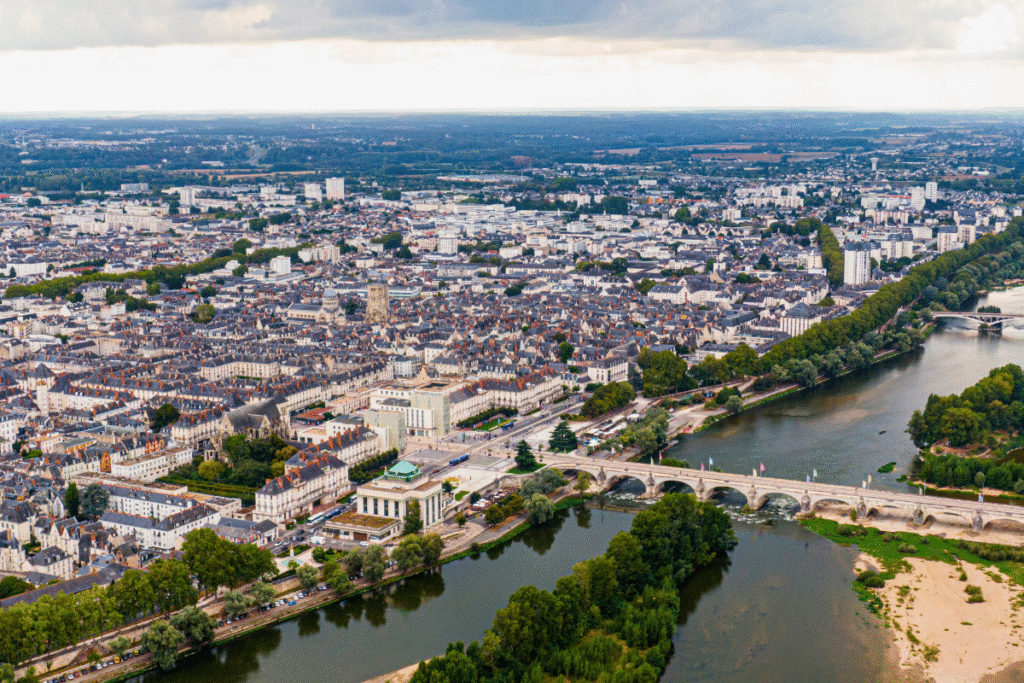

Final Thoughts: Château de Chambord Is Pure Castle Magic
It’s funny how some places manage to exceed even the highest expectations. For me, Chambord was one of those. Sure, I’d seen the glossy photos, skimmed the history books, and watched a few drone videos on YouTube—but none of that quite prepared me for the sheer scale and wild beauty of the real thing. There’s something powerful about standing under those towers, looking up at the rooftop forest of stone, and realizing this whole place sprang from one young king’s oversized imagination.
Even if you’re not a “castle person,” Chambord has a way of winning you over. Maybe it’s the mad genius of the double-helix staircase, the stories hiding in quiet corridors, or just the simple pleasure of a picnic on the lawns with that dramatic silhouette as your backdrop. I’ve been lucky enough to visit a lot of castles, and Chambord is one of the few where I’d say—slow down, stay longer than you planned, and let the place sink in.
If you’re planning a visit, my advice is simple: be curious. Take time to wander outside the main routes. Chat with the guides. Try the Loire wine, catch a sunset over the canal, and let yourself get lost in the stories. Chambord isn’t just about checking off a sight—it’s about experiencing a piece of living history in the French countryside.
And hey, if you go, I’d love to hear what surprised you most or what your favorite moment was. Drop your story in the comments 💬 or send a message—because the magic of Chambord is something best shared.
👉 Still hungry for castles? Don’t miss our guides to Neuschwanstein Castle and Edinburgh Castle—two more destinations where history and imagination run wild.
Happy exploring!
📸 And if this article sparked your curiosity about the castles, follow along. We are on Instagram, Pinterest, Facebook, and X, too. More castles (and more stories) are just around the bend. Explore all our castle adventures here!





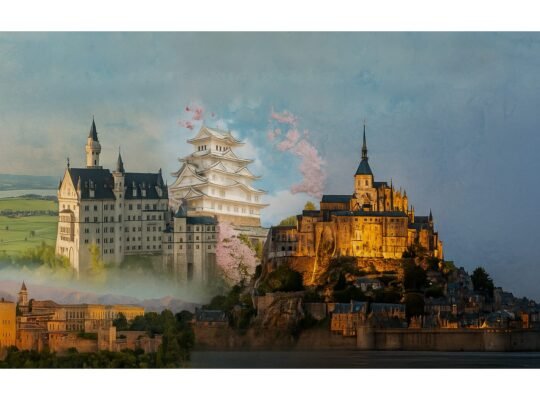
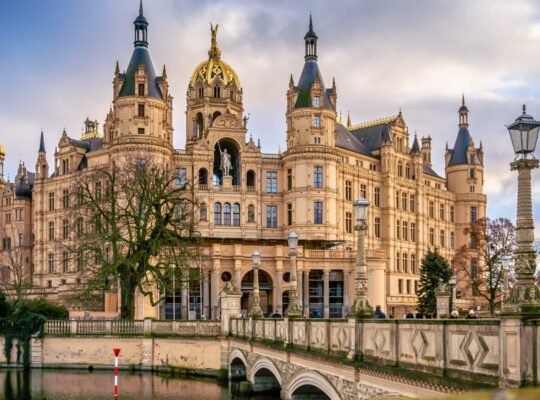
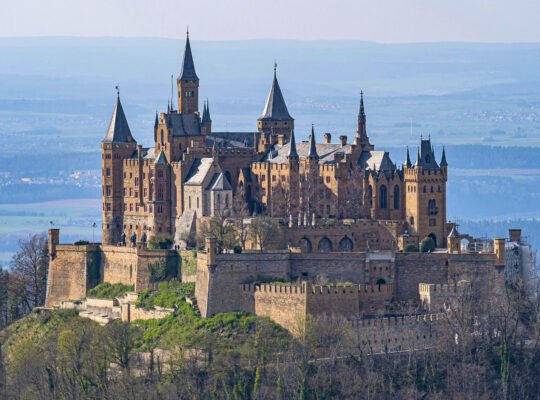
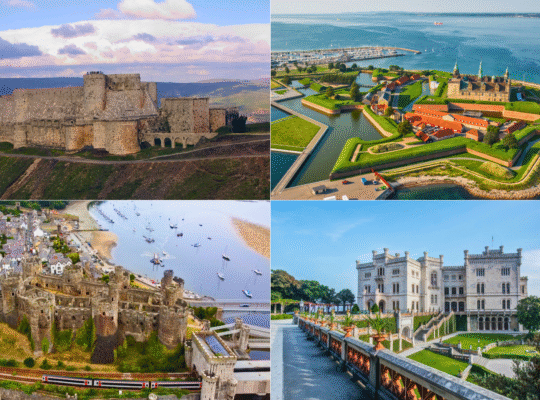
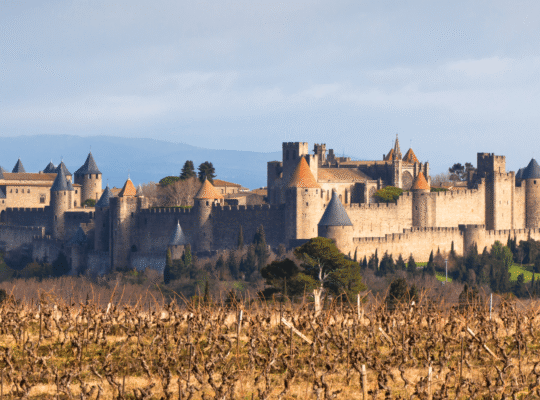

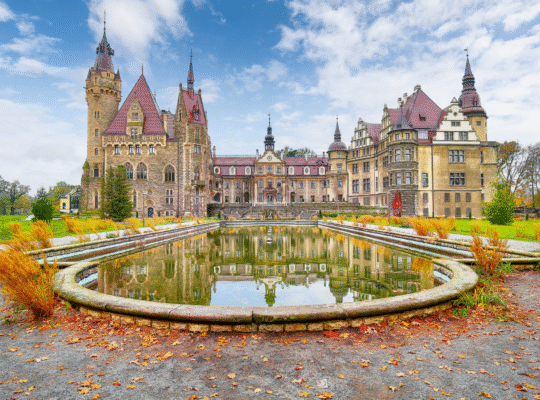
2 Comments